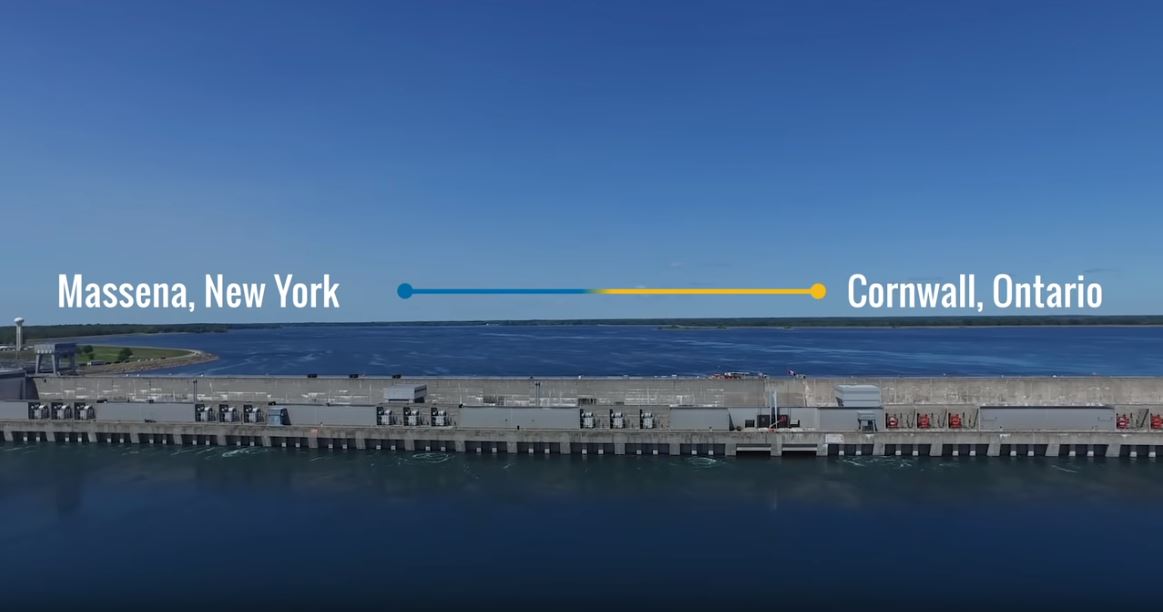The Thousand Islands Association has grown frustrated with the ongoing flooding around the St. Lawrence River shoreline which has caused irreversible damage to local businesses and homeowners.

On Saturday afternoon, the Thousand Islands Association held a public meeting in Gananoque to discuss the requests they’ve made to the International Joint Commission, (IJC) to alter Plan 2014.
Plan 2014 was created by the IJC, which set out guidelines to regulate the flow of water through the Moses-Saunders Dam spanning the St. Lawrence River between Massena, New York and Cornwall, Ont.
Sarah Delicate, president of United Shoreline Ontario, spoke during a public meeting at the Gananoque Inn on Saturday afternoon. About 300 people attended the meeting, voicing their questions and concerns about the water levels causing further damage to their properties.
“The International Joint Commission, in the development of the plan, knew this was an extremely high risk of this catastrophic flooding,” says Delicate.
“The IJC has a long-term mandate to do adaptive management, but that is a multi-year process,” said Ken White, who sits on the board of directors for the Thousand Islands Association. “There is no dialogue going on about any flaws that they see with their plan. Every response we hear is them blaming it (the high water levels) on some other cause.”

Get daily National news
The Thousand Islands Association says Plan 2014 may not be the direct cause of the flooding but believe the plan made the situation worse.
However, IJC’S Canadian chair Pierre Beland disagrees.
When Beland spoke with Global News last week, he said climate change is a contributing factor to the flooding that occurred in 2017 and 2019, since Ontario experienced higher levels of rainfall.
“It is simply a coincidence that at the same time the new plan got into effect we had such high supplies and again in 2019,” said Beland.
In response to Beland’s belief that unpredictable weather caused flooding in Lake Ontario, Delicate says,
“How can you blame the weather when you have the mechanisms and you’re choosing not to use them? If you can’t control the weather or Lake Erie, what you can control is the plan, get this water out of the system.”
Members of the Thousand Islands Association and United Shoreline Ontario say the next steps should include fast-tracking the GLAM (Great Lakes Adaptive Management) process to increase the sophistication of Plan 2014’s decision-making model.
This would require creating options for the existing three major control loops: Lake Ontario, F-Limits and L-Limits, as well as adding control loops which will help warn of potential flooding.
In addition, they will require several steps, including conducting studies and tracking water levels and flow peaks, which will prevent further flooding from affecting communities in the future.
However, the water will likely continue to rise if it is not drained by December, says Delicate.
“If we come fresh into spring next year with all of this extra water being held in Lake Ontario there is a forecast that we could hit 250 feet which is a foot higher than we had last year,” Delicate says.
In order for any changes to be made to Plan 2014, all six members of the IJC must unanimously agree.
According to the Thousand Islands Association, all six IJC commissioners were invited to attend Saturday’s meeting. However, no one responded to the invitation or attended the meeting.
The association is asking for Plan 2014 to be changed because members say the water levels are only going to get higher in 2020.
With files from Kraig Krause, Global News










Comments